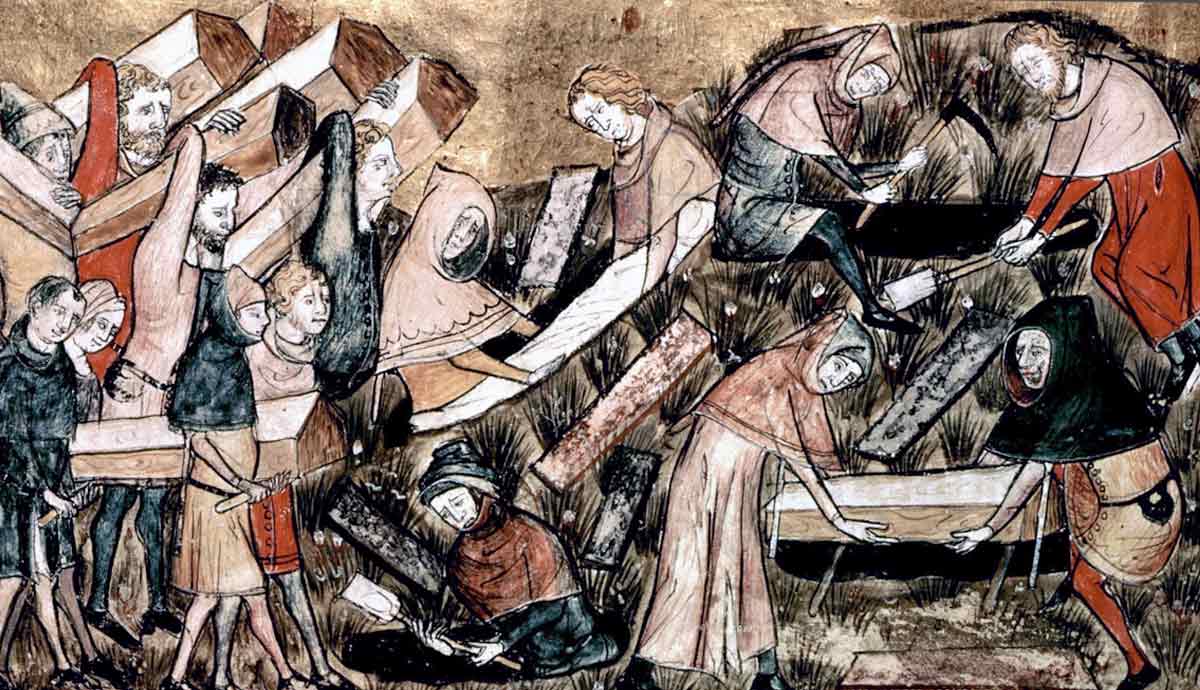How Long Did the Black Plague Last?
Pierart dou Tielt, manuscript illumination in the Tractatus quartus by Gilles li Muisi, Tournai, 1353. (MS 13076-13077, fol. 24v). Source: National Public RadioThe Black Plague is one of the most devastating pandemics the world has ever experienced. A common question about the scourge is how long it lasted. The answer, however, is not simple as the plague did not have a clean start and end date. This was because it was not one single occurrence but a continuous event that kept re-emerging for several hundred years. It began with a sudden, violent outbreak that spread to various continents. The disease was finally countered using modern medicine.When the First Wave BeganThe Dance of Death, from the Nuremberg Chronicle, by Michael Wolgemot, 1493. Source: WikimediaThe most documented timeline of the Black Plague is often referred to as the Black Death and was the most lethal period. During the first outbreak which occurred from 1347, the disease spread across Europe and North Africa with shocking speed and devastation. In Europe, the worst of the destruction took place over about four years.The sickness is believed to have spread in Europe following the arrival of twelve trading ships from Genoa in October 1347. They docked at the harbor at Messina, Sicily. However, they did not just carry cargo, they were infested with the disease and had sailors on board who were already dead or dying from the malady. The bodies of the infected sailors were covered in dark swellings. The marks called buboes, gave the disease its name the bubonic plague. From the port, the infection spread across the land.How Did the Disease Spread?Lithograph of a woman in rags drawing a cart of plague victims, by J. Moynet, 1852, after L. Duveau. Source: Wellcome CollectionThe disease spread in numerous ways. However, fleas living on black rats reportedly carried the bacteria Yersinia pestis and are believed to have been responsible for the initial spreading of the disease. The fleas jumped from rats to people, passing on the illness. At the time, rats were everywhere in the cities and ships. This aspect made them the perfect carriers. By early 1348, the plague had ravaged major ports in Italy before moving to France. It crossed into England that same year and then spread across Europe, reaching Germany, Scotland, and Ireland by 1349. By 1350, it had moved as far as Scandinavia and Russia.Peasants engaged in threshing, from Luttrell Psalter. Source: British Library, LondonThe cost in human life was hard to grasp. Historians believe Europes population dropped by about 30 to 60 percent. It is reported that between 25 and 50 million people died due to sickness in the first wave. The desolation left farms without workers and farm produce to rot due to a severe shortage of labor. The situation led to an almost complete breakdown of the known world at the time and led to the collapse of the feudal system in Britain at the time.When the Second Pandemic BeganTwo men discovering a dead woman in the street during the Great Plague of London by Herbert Railton, 1665. Source: Wellcome CollectionThe first deadly wave subsided around 1351, but the plague itself was not gone. The bacteria simply kept spreading among Europes rodent populations. What came next was a long era of emerging outbreaks that lasted for nearly four hundred years. That said, the outbreaks were less severe when compared to the initial wave.Several major plagues marked the long period of reoccurrences. The Italian Plague that lasted between 1629 and 1631 killed about a million people. The Great Plague of Seville in 1649 wiped out half the city, and the Great Plague of London that occurred between 1665 and 1666 killed around 100,000 people. More outbreaks came later, like the Great Plague of Vienna in 1679, and the European epidemic in Marseille that occurred between the years 1720 and 1722.Why Did the Plague Slowly Fade in Western Europe?Plague in Bronze Age Eurasia. Source: Science DirectThere was no single reason for the drop in new infections. Some peoples immune systems, for example, simply adapted to overcome the infection. People and societies also put measures to prevent new infections. Cities in Italy, for example, created the first public health systems that placed travelers in quarantine. A change in the parasite dynamics was likely even more important. The brown rat, for example, began to replace the black rat which was notorious for spreading the disease across the continent. Brown rats are known to be shy and tend to stay away from peoples homes. The simple change disrupted the deadly chain of rat to flea to human disease transmission.Who Discovered the Main Cause of the Disease?The bacterium Yersinia pestis, the cause of the Bubonic Plague. Source: CDC / Courtesy of Larry Stauffer, Oregon State Public Health Laboratory / Wikimedia CommonsIn 1894, during an outbreak in Hong Kong, a scientist named Alexandre Yersin found the bacterium that caused the sickness. It is now named Yersinia pestis in his honor. A few years later, scientists were able to prove that fleas were responsible for spreading the disease. The discovery was a great turning point that led to the development of antibiotics such as streptomycin which changed the course of the plague by providing an effective treatment for the disease. Since then, the disease ceased to be a significant threat to humanity.


